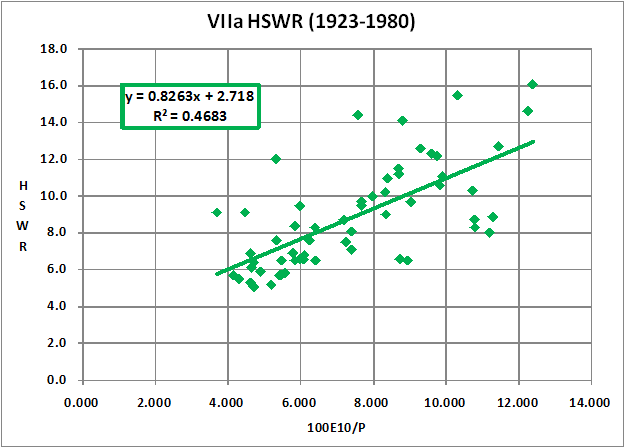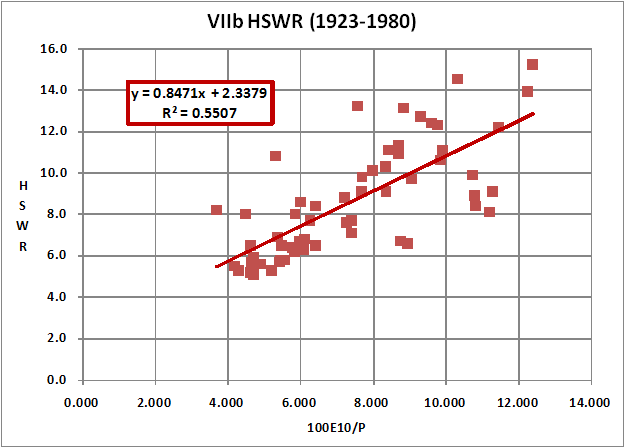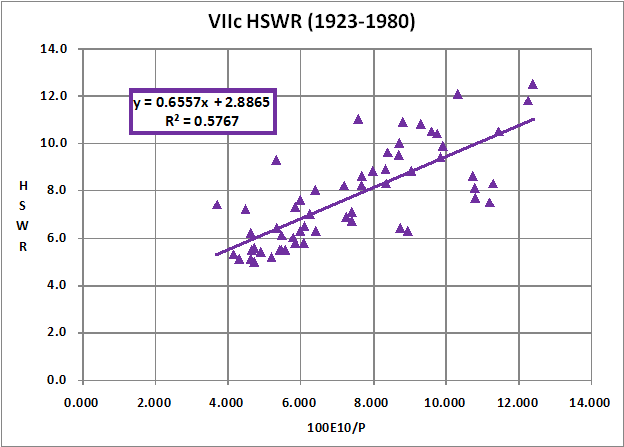|
Simple Valuation Informed IndexingValuation Informed Indexing offers an advantage over buy and hold. Here is what a simple variant delivers in terms of Safe Withdrawal Rates. Typically, you make only one or two allocation shifts in a 30 year period. The CalculatorI built a calculator to test the advantage of staying out of stocks whenever P/E10=20 and above. I kept the investor mostly out of stocks until P/E10 fell below 10. That is, I froze the allocation during long lasting (secular) Bear Markets. I did this by modifying the P/E10 data in the Deluxe V1.1A08a calculator. Simple Valuation Informed Indexing ResultsI set the calculator to withdraw a fixed percentage of the original balance (plus adjustments to match inflation). I determined 30-year Historical Surviving Withdrawal Rates. That is, I determined the withdrawal rates at which a portfolio would have a positive balance at Year 30 but not in Year 31. I did not assume any expenses. 


ObservationsVIIa and VIIb support a Safe Withdrawal Rate of 6% (plus inflation) at today’s valuations (P/E10=17 and 100E10/P=6.0%). Reducing the stock allocation to 80% during Bull Market run ups still allows you to withdraw 5.8% (plus inflation). |